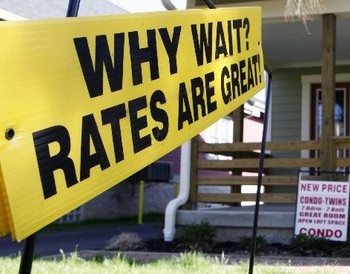Since the end of the financial crisis and subprime mortgage meltdown, obtaining a mortgage has been difficult – to say the least. From increased scrutiny during the underwriting process to higher down payment requirements, many have found themselves unable to qualify. In fact, even Federal Reserve chairman Ben Bernanke recently stated that he was turned down while trying to refinance his own mortgage. While it is certainly understandable that the lax lending standards that helped lead to the housing bubble should be tightened, many, including Bernanke, felt that it is possible they’ve become too stringent. As a result, changes are being implemented that may make getting a mortgage a bit easier.
Mortgage behemoths Freddie Mac and Fannie Mae will now back mortgages with as little as 3 percent down while also simplifying the documentation process. The changes are designed to jump-start lending to qualified lower and middle income borrowers who can’t come up with a larger down payment but can afford the monthly mortgage payments. While programs from Freddie Mac and Fannie Mae differ slightly, the primary goal remains the same: encouraging homeownership. "The Home Possible Advantage program gives qualified borrowers with limited down payment savings a responsible path to homeownership and lenders a new tool for reaching eligible working families ready to own a home of their own.,” said Dave Lowman, executive vice president, single-family business, at Freddie Mac. “Home Possible Advantage is Freddie Mac's newest effort to foster a strong and stable mortgage market."
Lower down payments
The new program from Freddie Mac is available to both existing and first-time homebuyers to purchase a single unit property or for a no cash-out refinance of an existing loan. (Existing homeowners cannot take equity out as part of the refinance process.) In an effort to educate inexperienced purchasers, first-time homebuyers are required to participate in an approved buyer education program.
In contrast, Fannie Mae’s 3 percent down payment option is available only if at least one co-borrower is a first-time buyer. However, existing homeowners who wish to refinance their Fannie Mae-owned mortgage but do not qualify under the Home Affordable Refinance Program can refinance their loan up to the 97 percent loan-to-value level under a limited cash-out option. Keep in mind that these loans will require private mortgage insurance since the down payment is less than 20 percent.
Boost to the real estate market
Many analysts have noted that the rebound in home prices has begun to slow and the hope is that less restrictive lending programs may lead to increased demand, pushing the housing market up, which, in turn, may help improve economic activity. An Urban Institute study from earlier this year suggested that if credit requirements were relaxed to "normal levels," about 1.2 million additional home loans per year could have been made. Lower standards coupled with low rates may certainly have the potential to move the housing market. Remember, interest rates remain low with 30-year and 15-year rates around 3.93 and 3.20 percent, respectively (Freddie Mac Primary Mortgage Market Survey).
Making homeownership accessible to more Americans is certainly a good thing. However, the concern is that easy lending standards contributed to the housing crisis in the first place. While the lending standards of the new programs are nowhere near as loose as standards during the wild, wild west days of the mortgage market before the crisis, these loans may still be a concern. In fact, Nobel Prize-winning economist Robert Shiller told CNBC, "It sounds a little risky. Risky for the lender, and for the mortgage insurer who is going to insure the mortgage obligations.” The risk associated with lower down payments should be weighed carefully.
Remember – just because credit is accessible, it doesn’t mean it makes good financial sense to take advantage of it. Homeownership has always been an important part of the American dream but financial missteps coupled with bad market timing and tough personal circumstances can easily turn it into a nightmare. There are many factors to consider before jumping into a home. First, carefully review your budget to ensure that you have excess cash flow available for all financial goals – not just your mortgage payment. You should be able to fully fund retirement and other goals while still making your mortgage payments. If not, you may be buying more home than you can afford. It is also critical to maintain at least 6 to 12 months of cash reserves so funds are available in the event of a financial emergency – such as the loss of a job or health issues. In an effort to address other unforeseen challenges, be sure to maintain proper insurance coverage for both you (life insurance and disability insurance) and your home (property and casualty). Careful planning can help protect against the unexpected.
Availability of credit is an important part of a healthy, functioning economy. The hope is that the new standards may promote lending and refinancing to those that need it. Since everyone’s situation is unique, be sure to carefully review your personal circumstances with your financial, tax and mortgage advisers to determine the appropriate approach for you.
Kurt J. Rossi, MBA, CFP®, CRPC®, AIF® is a CERTIFIED FINANCIAL PLANNERtm Practitioner & Wealth Advisor. He can be reached for questions at 732-280-7550, kurt.rossi@Independentwm.com, www.bringyourfinancestolife.com & www.Independentwm.com. LPL Financial Member FINRA/SIPC.








